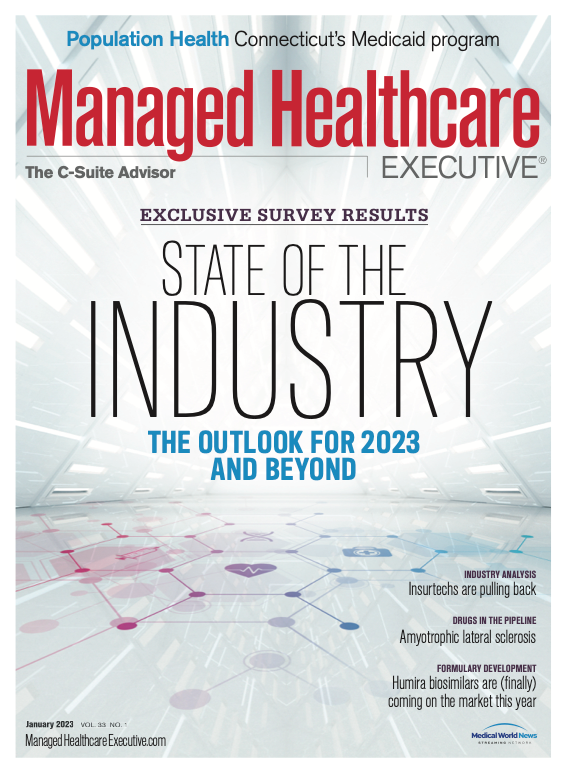- Drug Coverage
- Hypertrophic Cardiomyopathy (HCM)
- Vaccines: 2023 Year in Review
- Eyecare
- Urothelial Carcinoma
- Women's Health
- Hemophilia
- Heart Failure
- Vaccines
- Neonatal Care
- NSCLC
- Type II Inflammation
- Substance Use Disorder
- Gene Therapy
- Lung Cancer
- Spinal Muscular Atrophy
- HIV
- Post-Acute Care
- Liver Disease
- Pulmonary Arterial Hypertension
- Safety & Recalls
- Biologics
- Asthma
- Atrial Fibrillation
- Type I Diabetes
- RSV
- COVID-19
- Cardiovascular Diseases
- Breast Cancer
- Prescription Digital Therapeutics
- Reproductive Health
- The Improving Patient Access Podcast
- Blood Cancer
- Ulcerative Colitis
- Respiratory Conditions
- Multiple Sclerosis
- Digital Health
- Population Health
- Sleep Disorders
- Biosimilars
- Plaque Psoriasis
- Leukemia and Lymphoma
- Oncology
- Pediatrics
- Urology
- Obstetrics-Gynecology & Women's Health
- Opioids
- Solid Tumors
- Autoimmune Diseases
- Dermatology
- Diabetes
- Mental Health
Managed Healthcare Executive® State of the Industry Survey Results, Part 1
Respondents ranked labor shortages and closing healthcare disparities the highest when asked what about most important issues facing U.S. healthcare in 2023.

What issues and challenges in healthcare will loom the largest this year?
That was question we asked in our annual State of the Industry this year. Respondents rated issues on a scale of 1-10 with 10 being the most important. We then weighted the answers with 10 having a value of 10, 9 having a value of 9, and so on.
The results were close but labor shortages ranked the highest in importance (weighted score of 6.73), followed by closing healthcare disparities (6.69) and long covid (6.63).
Adoption of the biosimilars (6.37) and interoperability (6.27) came out at the bottom of the importance ranking.
It is not surprising that labor shortages topped the list. The news has been full of stories about staffing shortages and related labor unrest. The U.S. Bureau of Labor Statistics has projected that there will be 200,000 openings for registered nurses each year over the next eight years. The bureau says employment of nurses is expected to grow by 6% in the 2020s, but that is about the same rate of growth as other occupations. The openings are the result of retirements and people leaving nursing for other professions.
The MHE State of the Survey was conducted in late November and early December 2022. Our colleagues at Medical Economics® helped disseminate the survey. The survey had just over 450 respondents.

2023 Drug Trend Report - Xevant
May 16th 2024To effectively navigate the changing pharmacy landscape and maintain a robust, cost-effective pharmacy benefit, you must understand the forces behind rising drug trend. What’s driving your costs and what can you do about it? As a leader in the PBM analytics space, we offer a unique perspective on pivotal trend drivers. Here’s what our comprehensive analysis revealed: -A surge in utilization rates across specialty and non-specialty drugs, magnified by anti-obesity therapies -Financial strain imposed by anti-inflammatory biologics and the yet-to-be-fulfilled -promise of biosimilar savings -Persistent price inflation driving higher costs year over year
Read More
